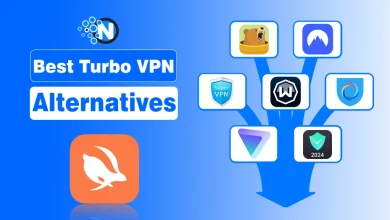Travel Taiwan with an eSIM: No SIM Swaps, No Stress

Traveling to Taiwan is an adventure filled with vibrant night markets, breathtaking landscapes, and rich cultural experiences. But what about staying connected in areas where Wi-Fi is more of a hope than a promise?
While Taiwan’s big cities are well-connected, the real beauty of this island often lies in places where signal bars disappear. These magical places often have one thing in common: poor mobile signals and limited Wi-Fi. This is where using an eSIM comes in handy.
In this blog post, I will explain how an eSIM for Taiwan can keep you connected and in control, whether you’re hiking in the forests or finding a great street food spot in Taiwan.
Travel With eSIM in Taiwan without Signal Struggle
An eSIM keeps you connected even when you walk far off the usual tourist path. Here is how to explore Taiwan’s special places without worrying about signal loss.

1. Lose the Crowds, Not the Connection
Taiwan has much more than city lights and popular tourist hubs. Take the scenic town of Dulan on the east coast. Known for its laid-back surf culture and Indigenous art scene, Dulan is a world away from the busy streets of Taipei.
Or consider Smangus, an Indigenous village nestled deep in the central mountains, where electricity came only in recent decades and traditions remain beautifully intact.
However, beauty comes with remoteness and most of them do not have good public WiFi or even good mobile networks using international SIMs. This is where an eSIM comes in handy. It links you to local Taiwanese networks without hitches and keeps you online in areas where conventional SIM cards or roaming packages would have failed and charged a high fee.
You can have your cake and eat it either as you ride along the east coast, wander in the mists of tea plantations, or bike along picturesque byways, without any compromise between connection and authenticity.
2. Hike Smarter with Real-Time Maps and GPS
Taiwan is the hiker heaven, and most of the best trails are not well marked. The signposts usually vanish at the time when you need them the most, and the landscape may change incredibly quickly; one moment, it is a paved road, the next, it is dense forest or rocky precipices.
Imagine that you are on the Zhuilu Old Trail in Taroko Gorge, hanging on a narrow ledge over a canyon, have no signal on your mobile phone, and do not know how far the next checkpoint is. Or imagine that you are walking in Butterfly Trail of Maolin and you see masses of fluttering wings all around you and at one point you lose track of the trailhead because you are back home.
With an eSIM, you can:
- Access GPS navigation in real-time
- Load elevation profiles and satellite maps
- Search for trail exits, shelters, and emergency contacts
- Receive weather alerts and park updates mid-trek
These features not only enhance your hiking experience-they keep you safe when you’re hours away from help.
3. Discover Hidden Cafés, Night Markets, and Local Secrets
Some of Taiwan’s best experiences aren’t listed on TripAdvisor or glossy travel brochures. They’re discovered in narrow alleys, through word-of-mouth recommendations, and in places only locals know.
A perfect example? The night markets in smaller towns like Luodong or Douliu, which don’t make most tourists’ top 10 lists but offer some of the best regional food you’ll ever try, or a tiny café tucked away in the mountains of Yilan, where you can sip locally roasted coffee with panoramic views.
When you’re connected, you can:
- Use apps like Google Maps, Dcard, or Xiaohongshu to spot trending places nearby
- Translate handwritten signs and menus in real-time
- Read live reviews of restaurants or activities before committing
- Follow travel forums to catch flash events, local performances, or pop-up food stalls
Every step becomes an opportunity for discovery when your phone is connected and ready to guide you.
4. Prioritize Safety in Remote Areas
Travel to some of the unconventional places offers some adventure-but with some dangers. A flat tyre on the road to Sun Moon Lake, an unwanted storm during a hiking trip in Hehuanshan, or a simple injury in Nanzhuang may turn into a stressful event without the convenience of a mobile connection.
With an eSIM-enabled smartphone, you can:
- Call local emergency services immediately
- Share your live location with travel partners or family
- Access medical directories to locate the nearest hospital or clinic
- Translate symptoms or medical terms if you’re in a language barrier situation
In less-touristed regions of Hualien, Taitung, or the East Rift Valley, having a digital lifeline could make all the difference between a minor hiccup and a major issue.
5. Share, Save, and Store Your Adventures Instantly
We travel to make memories, but in the digital age, we also like to capture and share them. Whether you’re filming a timelapse of the sunrise at Alishan, uploading drone shots over Qingshui Cliffs, or sending video updates to friends back home, staying connected lets you preserve every moment in real time.
With an eSIM, you can enjoy benefits like:
- Instant uploads to social media platforms like Instagram, TikTok, and YouTube
- Automatic cloud backups of photos and videos
- Live journaling or vlogging for those building content on the go
- No need to wait for hotel Wi-Fi or risk losing content before saving
Your memories are too valuable to delay, or worse, to lose due to a lost or damaged phone without cloud backup.
Final Thoughts
Taiwan’s attraction isn’t just in its efficiency or skyline vistas. It’s also in the calm rice farms, misty mountains, coastline paths, and small restaurants that surprise you at every turn.
But these great things happen in locations where signal strength is poor.
An eSIM for Taiwan makes sure that you’re not missing out on the tools you need to travel smarter, safer, and more meaningfully, whether you’re bicycling, trekking, wandering, or just searching for a wonderful bowl of beef noodles.




